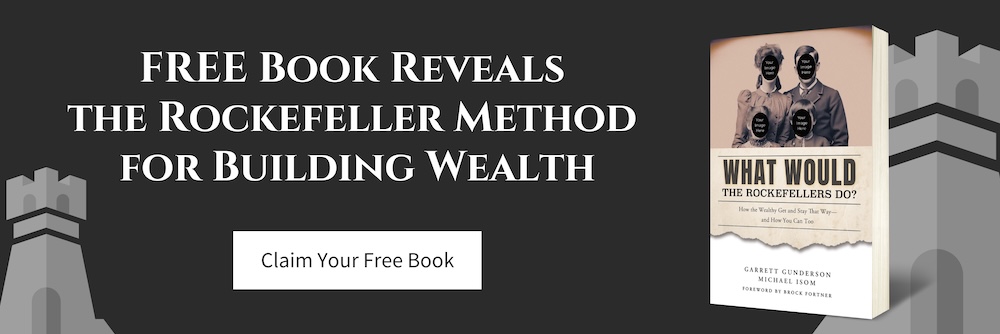
How Whole Life Premiums Work—and What Happens If You Miss One (Part 4 of 6)
Part 1: The Fundamentals of Whole Life Insurance
Part 2: Understanding Dividends & Interest
Part 3: How to Access Cash Value & Policy Loans
Part 4: How Whole Life Insurance Premiums Work
Part 5: Strategic Uses of Whole Life Insurance
Part 6: Using Whole Life Insurance for Legacy Planning
One of the most common myths about whole life insurance is that it’s rigid. People hear “permanent” and think that means inflexible.
But when structured correctly, a whole life policyoffers more flexibility than most traditional financial tools.
Here’s what you really need to know about premiums, payments, and what happens when life happens.
What’s Required of Me Each Year?
Let’s start with the baseline.
Every whole life policy has a base premium—the amount contractually required to keep the policy in force. If you pay nothing, the policy will eventually lapse.
But when designed for early cash value, you’ll also have a paid-up additions (PUA) rider. This allows you to contribute additional dollars into your policy beyond the base premium—accelerating your cash value growth.
Here’s what that means for you:
Base premium = required to maintain the contract
PUA contributions = optional, but strategic
At StoneCentury, we help clients build policies with flexible PUA structures, so they can adjust contributions based on cash flow, opportunities, or changing life circumstances.
What Happens If I Miss a Whole Life Insurance Premium?
Missing a premium doesn’t automatically cancel your policy—but it does trigger a series of internal adjustments.
If the policy has built up enough cash value, the insurance company may:
Use cash value to cover the premium (called an automatic premium loan).
Create an extended term policy until coverage is over
You also may be able to:
Change premium frequency to monthly, quarterly, or semi-annually
Convert the policy to reduced paid-up, keeping it in force but stopping premium payments .
Begin drawing from dividends or accumulated value to keep the policy alive (premium offset)
These features are safeguards that help with trying to keep your coverage in force.
If you miss a premium, we recommend contacting your advisor immediately to evaluate options and preserve your policy’s performance.
What Happens If I Can’t Pay a Whole Life Insurance Premium?
If a temporary cash flow crunch makes premiums difficult, you still have options:
Partial PUA suspension: Reduce contributions to just the base premium.
Loan from the policy: Use your cash value to cover the premium itself.
Policy restructuring: Shift to premium offset or adjust the funding strategy.
We work with clients to plan for these possibilities in advance. You shouldn't have to cancel a policy to navigate a hard season—you just need a flexible design and a responsive strategy.
Should I Pay From a Business or Personal Account?
This is a strategic decision—and one that depends on your goals.
If You Pay Personally:
Premiums are not deductible.
The policy is owned by you individually.
The death benefit typically goes to your family (but can go anywhere you want).
If You Pay Through a Business:
It may offer potential deductions (when structured for key person or executive bonus).
Your business owns or funds the policy.
You must coordinate ownership, beneficiary structure, and tax treatment carefully.
For many business owners, it makes sense to blend both approaches: using business dollars to fund protection for the business, and personal dollars to build liquidity and legacy.
We help clients align ownership, funding, and exit strategy so that your premiums are as tax-efficient as your cash flow allows.
Are Whole Life Insurance Premiums Tax Deductible?
In most cases, no—whole life premiums are not tax deductible when the policy is used for personal wealth-building or family protection.
However, premiums may be deductible in certain business structures, such as:
Executive bonus plans
Split-dollar arrangements
Key person policies
Buy-sell funding
These require careful legal and tax coordination, and must be built into a formal compensation or business continuity plan.
We collaborate with your CPA and legal team to ensure compliance, clarity, and coordination across your financial and legal ecosystem.
How Can I Pay Whole Life Insurance Premiums?
You can pay premiums in multiple ways:
Annually (often includes a discount)
Monthly, quarterly, or semiannually
Via checking account draft, online portal, or business payment
We typically recommend annual payments where cash flow allows—it's more efficient and less hassle. But flexibility is built into every design we create.
Why This Matters
A whole life policy, when designed with strategy, becomes a powerful blend of predictability and flexibility.
You’re not locked into a rigid payment schedule. You’re building a financial engine that adapts with your income, your business, and your life. Especially when you understand how to leverage the living benefits of whole life insurance to build wealth.
Understanding how premiums work, and how to structure them for maximum cash flow and capital access,is what separates traditional life insurance from a StoneCentury wealth strategy.
Learn How the Rockefellers Structured Their Premiums for Generational Wealth
Want to see how one of the wealthiest families in history used life insurance premiums to build liquidity, fund opportunity, and protect legacy?
Get your free copy of What Would the Rockefellers Do?
Inside, we’ll walk you through how they structured policies, leveraged premium strategies, and created financial flexibility that lasted generations.
Click here to request your free copy.


